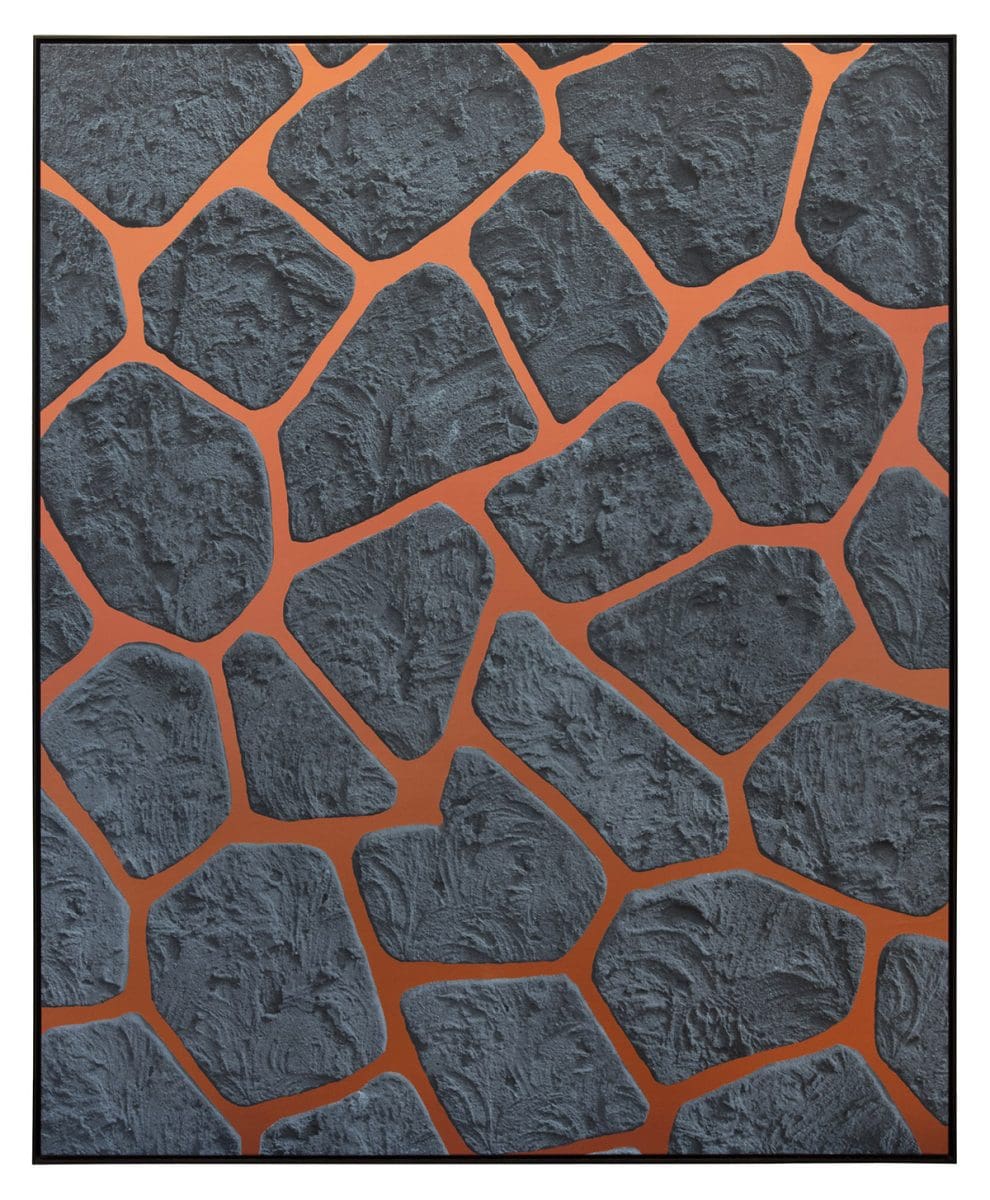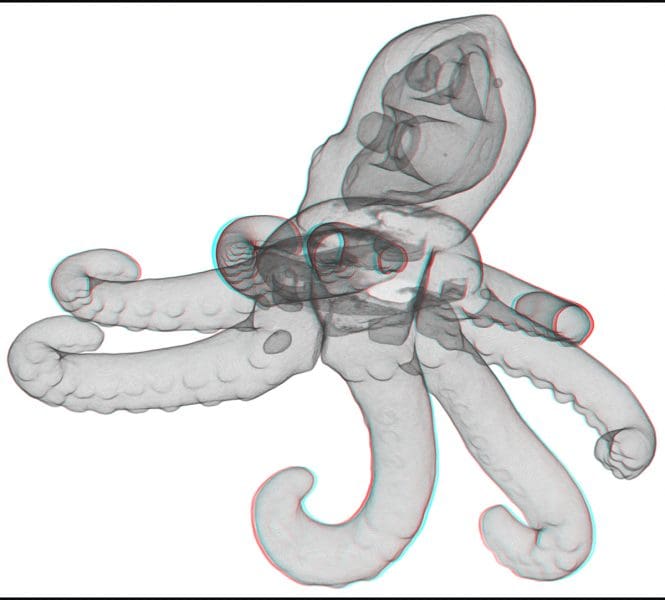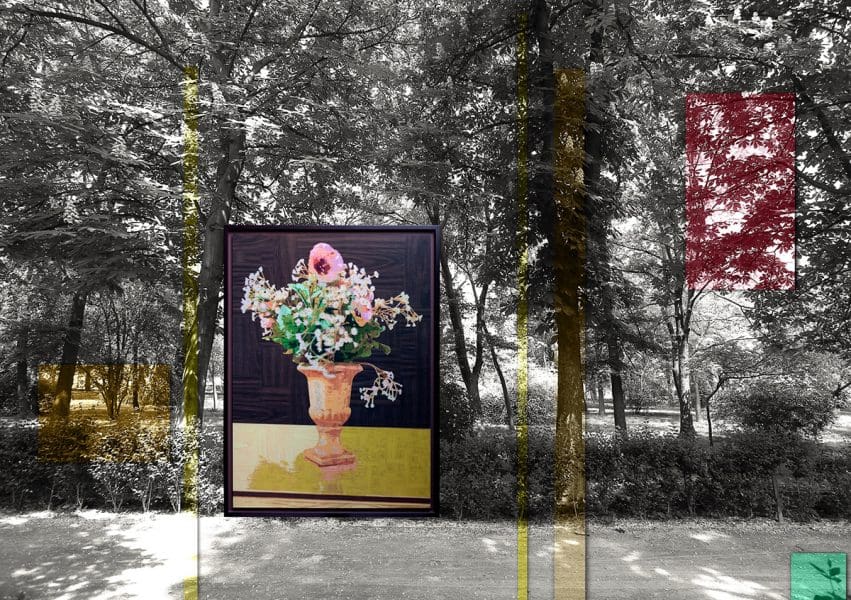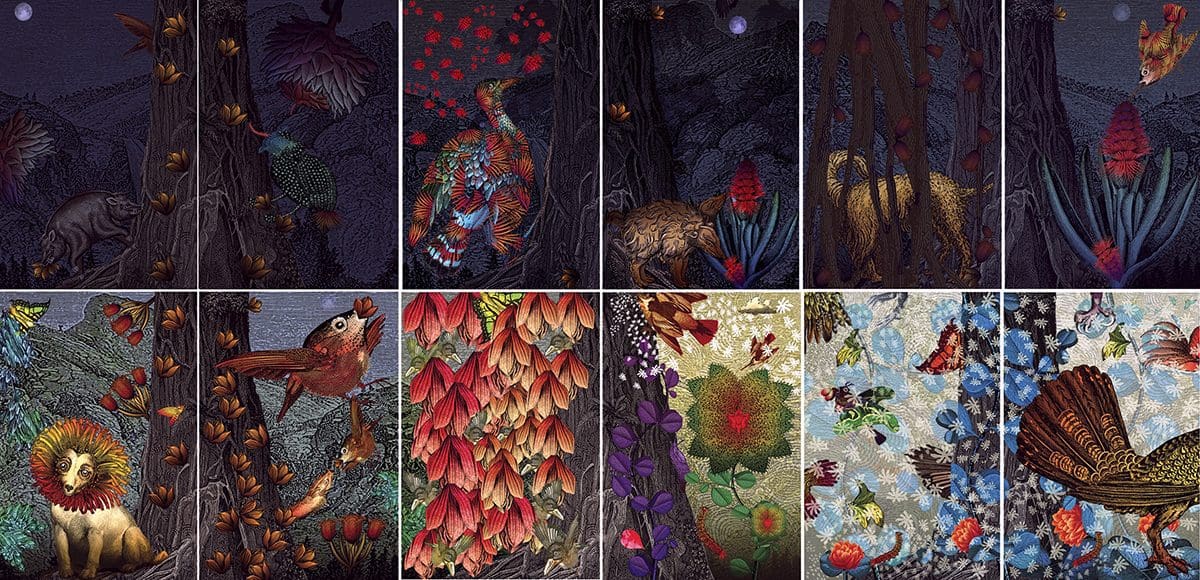
Piercing the veil
A new exhibition at Buxton Contemporary finds a rich complexity in the shadowy terrain between life and death.

Alison Alder, Australian Political Disasters of the 21st Century, 2017, screenprint and rubber stamp, each panel 51 x 76cm (9 panels total). Unlimited editions.

Anna Kristensen, Crazy Wall II, 2016, silkscreen ink and acrylic on canvas, 237 x 195.5 x 6cm.

Erica Seccombe, Ocularanagluphos, 2012, Anaglyphic print on KMO.

Gary Carsley, Still Life with Landscape, 2005-2017, framed Lenticular print, photocopy applied to the wall and various wooden cutouts, dimensions variable.

Milan Milojevic, Night and Day (The Tree), 2016, multi-layered digital prints with etching overlay, 30 x 88cm each (180 x 88cm 12 panels).

Tony Curran, Contain, 2017, oil on polycotton, 113.5 x 83.5cm. Photo by Brenton McGeachie.
How does that old Joseph Heller quote go? Just because you’re paranoid doesn’t mean they aren’t after you. Ben Rak, the printmaker behind Aura: Repetition, Reproduction and the Mark of the Artist at the Manly Art Gallery & Museum, does seem a little touchy. Why else would you take on all the things that have traditionally dogged printmaking as a medium?
It was Walter Benjamin who said that artworks have an aura: a quality to do with imagined closeness to the artist. There was more to it, of course, but the nuances in Benjamin’s argument about how mechanical reproduction diminished this aura are perhaps beside the point. As Tim Gregory points out in his catalogue essay for Aura, the idea soon became a capitalist strategy to preserve the value of art objects. It reinforced a hierarchy of originals and second bests.
And yet, printmaking is still regularly pitched as the affordable entry point to collecting and prints by contemporary artists rarely show up in the major Australian art auctions.
Rak’s rebuttal is to gather 10 artists, himself included, whose works turn on the supposed shortcomings of printmaking and use them as conceptual strategies. The works on show in Aura are diverse. The most traditional is perhaps Michael Kempson’s Child’s Play series: 52 etchings of soft toys. Each is a mascot for a different country and together they form a darkly satirical sort of animal kingdom. The reproach in the eyes of the bald eagle (the stand-in for the United States) is brilliant. This is a toy that knows it’s about to be left behind at the servo, and only remembered 100km down the road. In Kempson’s work reproduction is used for both dramatic effect and satire. The next leader, the next toy, will be out of the factory soon.
Erica Seccombe takes up the issue of reproducibility. in her large anaglyphic print of a toy octopus, Ocularanagluphos, from 2012. This little toy, writ large, asks us to consider how we visualise and engage with our natural world. It looks sharply sci-fi until you put on the flimsy 3D glasses. The blue and red cello lenses smudge the detail, and give little in the way of extra dimension. But what they do instead is peel the blurry sea monster off the wall, hovering it in space and untethering it from any reality.
This floating quality appears again in Anna Kristensen’s Crazy Wall II. It’s an image of paving stones with the mortar painted an iridescent copper. The pavers appear to hang in some sort of unearthly, magicked space, an effect that’s undercut as you step closer and see that the paver images are tiny printed dots. Suddenly the stones have no weight; gravity is reconfigured again. Formally, the dots also flip the work from representational to flat abstraction.
His installation Still Life with Landscape centres around a lenticular print of a vase of flowers, an image composed of obsessively-sourced patterns and colours, virtually jig-sawed together like a parquetry floor. It is simultaneously flat and textured, still and moving, craft and art.
Tony Curran is a bit of a leftfielder. Usually considered a painter, he is included here for the way he takes digitally constructed images and reproduces them in paint. Rak calls him a human printer. Also in Aura are Milan Milojevic, Alison Alder, Samuel Tupou, Judy Watson and, of course Ben Rak. Print diehards might be disappointed by the light information about each artist’s process. But the message is clear enough: these are conceptual artists, not craftspeople.
Aura: Repetition, Reproduction and the Mark of the Artist
Manly Art Gallery & Museum
14 July – 3 September
Wagga Wagga Art Gallery
9 December – 4 March 2018